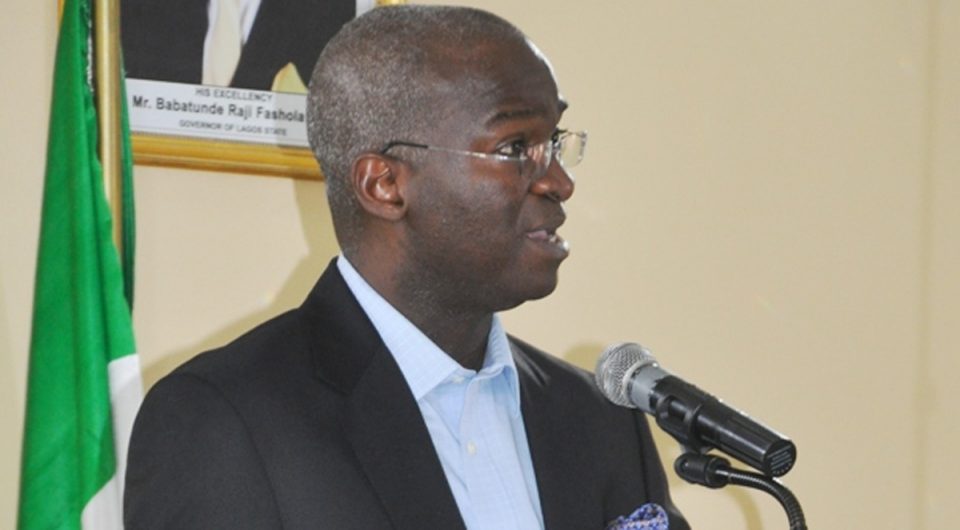The Minister of Works and Housing, Mr Babatunde Fashola, on Tuesday called for immediate expansion of diversion points on the Third Mainland Bridge, Lagos, for free flow of traffic.
During inspection of the highway, Fashola also called for redeployment and re-assessment of manpower to effectively manage traffic and guide motorists on the highway.
The bridge, which is the major access bridge into Lagos Island, was partially closed at midnight on Friday to enable repairs.
The closure will last for six months.
Fashola said during the inspection that there was the need for timely deployment of traffic management officers to areas of need, adding that they should be made liable for gridlock on the portions within their assigned jurisdiction.
The minister said that he got complaints on Monday night that the ramps were steep and angles of diversion were not wide enough.
He said that he urgently called for intervention to ease traffic.
He directed readjustments to make traffic better, urging traffic regulatory agencies to collaborate on the traffic changeover points.
Fashola expressed the hope that measures adopted so far would ease traffic and eliminate hardship during the rehabilitation of the bridge.
“I called last night to see what they can do to widen angles of diversion and I hope that brings some relief.
“We have to also look at the other ramp there (Ebute-Meta changeover), it is a little steep,’’ he said.
He also called for redistribution of traffic regulatory officers to bottleneck zones to reduce travel time.
“The men should space out and we should move more of them to the alternative routes. You (FRSC) and LASTMA, as collaboratively as you have done, move your men there so that as we are doing the changeover, it is to relieve where the alternative routes are.
“There is no traffic on the bridge, so we don’t need you on the bridge.
“This place (bridge) is being managed, so, we need them to help people get on and off,’’ he said.
He called on the state commissioner for transportation and heads of the traffic regulatory agencies to strategise and find new ways to curb gridlock.
Fashola gave the assurance that Eko Bridge would soon be repaired to reduce pressure on the Third Mainland Bridge
The Director, Federal Highways, South West, Mr Adedamola Kuti, while briefing the minister, explained the realignments made to take more vehicles on the two major intersections on the Adekunle and Ebute-Meta switchover points on the bridge.
“We are going to work on this and expand it further, that is why we are breaking here (Adeniji Adele),’’ he said.
The Federal Controller of Works in Lagos, Mr Olukayode Popoola, also explained the various priority time belts for motorists to use the bridge as well as how the alternative routes interlinked.
Popoola said repair works on the bridge were being carried out on 3.5km where the traffic were being diverted and later returned to the normal lane.
“When you called us yesterday, we came here to make observations and discovered it was wide enough to allow traffic to divert, the bottleneck was at Adeniji Adele.
“We increased the width, and as a result of that increase, the angle of turning was also increased. As at yesterday night, the traffic was moving,’’ he said.
He said that in collaboration with the Lagos State Government, the Federal Ministry of Works was managing the traffic and making adjustments for improvement while making more major routes motorable and accessible.
The Special Adviser to Lagos State Governor on Works and Infrastructure, Mrs Aramide Adeyoye, said that alternative routes were being rehabilitated and other inner routes made motorable.
She stressed the need to eliminate the menace of articulated vehicles on the Eko Bridge.
“Where the real bottleneck is, if we have to look at Lagos wholistically, is at Eko.
” Eko Bridge is still a hot spot because there are some expansion joints right now that are beginning to be slow points.
“Maybe, it might be possible to introduce some topper plates pending when we are going to do the final repairs. That is point number one to note.
“Number two is that we need to come out with some policies on the timing when articulated vehicles can come out, or we do a kind of simulation where smaller cars can go through inner roads and leave the major points for them so that we avoid clogging,’’ she said.
The Lagos State Commissioner for Transportation, Dr Fredrick Oladeinde, said that only 25 per cent of traffic on the bridge was being impacted by the repair works.
Oladeinde said his men were on ground to disperse traffic as quickly as possible during peak hours.
Earlier, Joint Managing Director of Borini Prono and Company (Nigeria) Limited, Gianfranco Albertazzi, the contractor on the project, assured that the project would be completed on schedule.
“We did it before and we are going to do it now,’’ he said.
The bridge which has gone through series of rehabilitation was last shut in August 2018 for a three-day investigative maintaince check.
Thereafter, some components needed for completion of repairs, which were not available locally, were sourced abroad.
The 11.8km Third Mainland Bridge is the longest of three bridges connecting Lagos Island to the mainland.
The bridge starts from Oworonshoki which is linked to the Apapa-Oshodi Expressway and the Lagos-Ibadan Expressway and ends at the Adeniji Adele Interchange on Lagos Island.
It was constructed in 1990 and was the longest in Africa until 1996 when The 6th October Bridge in Cairo was completed.




